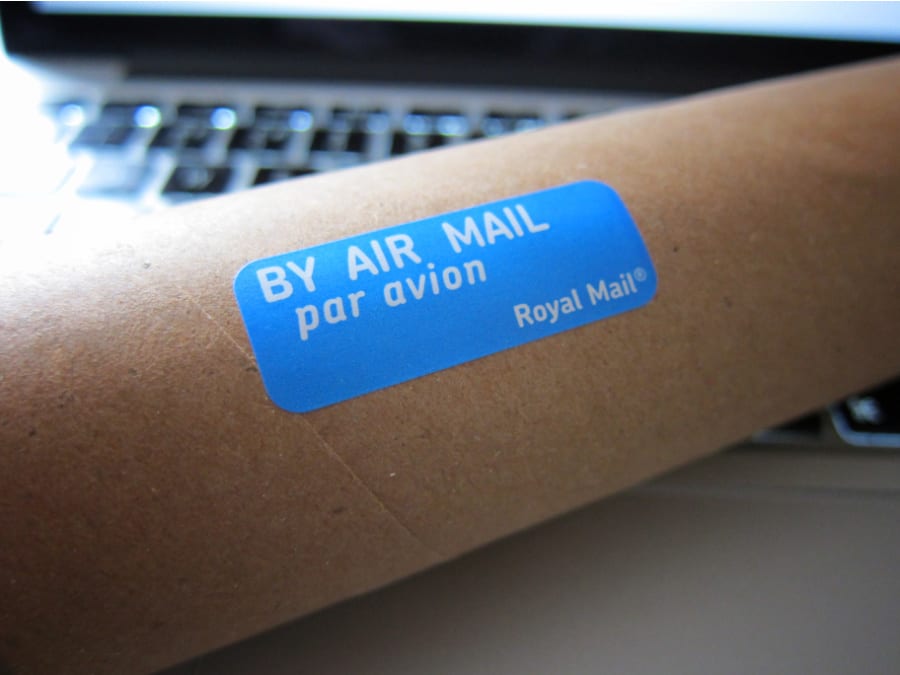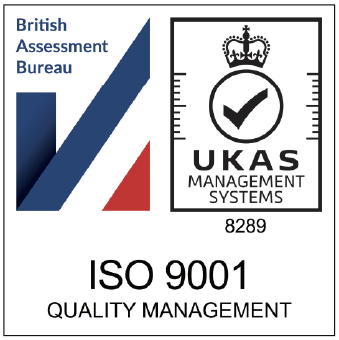Is your eCommerce store really profitable? You might have a great turnover with products flying off your (digital) shelves, but if you’re not taking into account things like landed cost, then you might not be doing as well as you think. Read on to find out everything you need to know about landed cost for your eCommerce store.
What is landed cost?
A customer places an order on your eCommerce store, you pay for postage and they receive it. Job done right? Well, not quite.
There’s more that goes into eCommerce shipping than many people realise. In fact, if you’re not factoring in things like taxes, duties, insurance, overheads and any other costs, as well as the cost of delivery itself, you could be selling at a loss without realising it.
So, landed cost is a way of calculating the total cost of getting a product to your customer.
To help you better understand landed cost, here are some of the things that the landed cost of your product(s) may include:
- The original price of your product (incorporating any costs involved in manufacture).
- Transportation fees (both domestic and international, if applicable).
- Customs.
- Duties/taxes.
- Tariffs.
- Insurance.
- Currency conversion (if applicable).
- Crating costs.
- Handling costs.
- Storage.
- Other overheads.
- Payment processing.
That’s not even an exhaustive list! But, as you can see, landed cost is definitely something you should be working out if you want to ensure your eCommerce business remains profitable.
Tip – landed cost can also be referred to as ‘net landed cost’, ‘landed price’, or ‘total landed cost’.
Important landed cost factors
Whilst that list above looks pretty intimidating, there are some factors that you should focus on more than others. Below, we’ve taken a more detailed look at these important factors for calculating landed cost.
Cost of Goods Sold (COGS)
The cost of goods sold is the cost of a product that you either manufacture or purchase from a supplier. The cost of goods sold includes the cost of raw materials, cost of parts used to make a product, direct labour costs, and overhead costs such as utilities and storage.
Calculating your cost of goods sold for a product will go a long way towards helping you then calculate the landed cost of your product (as figuring out the COGS will encompass many of the cost inputs to your product).
It’s important to stress that COGS is not the same as landed cost. Figure out your cost of goods sold, then use that number in your overall landed cost calculation.
Shipping
Shipping can account for a large chunk of the landed cost of your product, so it’s important you include this factor.
One of the things to consider when thinking about your shipping costs is the required speed of delivery. As a general rule of thumb, the quicker you need a product to arrive with your customer, the larger the shipping cost.
So, it pays to figure out if you’ll be mainly using expedited shipping or regular shipping.
 Taxes
Taxes
Depending on what you sell from your eCommerce store (and your level of turnover), you may need to charge VAT (usually 20%) on your products. Some eCommerce businesses choose to raise their prices to preserve their profit margin (at the risk of putting some customers off), whilst other eCommerce businesses choose to absorb the cost.
If you decide to absorb the cost of VAT then you may be able to reduce the impact this has on your eCommerce store by joining HMRC’s flat-rate scheme (where you don’t necessarily have to pay the full 20%), however the scheme only applies to businesses with a turnover under £150,000.
Whichever route you choose on VAT, you should factor this into the landed cost of your products.
Risk
When you’re ordering a large volume of products from a supplier it’s often worth taking out insurance. Equally, it can pay to take out insurance for when you’re shipping a product to a customer (especially if it’s a high value item). But, insurance costs money. So, it’s another factor to consider when calculating the landed cost of your products.
You’ll also need to think in terms of broader risk too. These can include costs associated with compliance, quality checks, and holding safety stock inventory.
Customs
If you decide to ship your products overseas then there is a world of different customs fees and duties you may have to negotiate.
Customs fees can include duties, taxes, tariffs, levies, brokerage fees, harbour fees and demurrage (storage whilst in custom).
These fees can really add up. There’s also the question as to who pays what. In some instances a customer can end up having to pay a hefty customs bill if you haven’t done your homework beforehand.
If you’re going to be shipping internationally on a regular basis, then you should familiarise yourself with INCOTERMS (a set of predefined terms to facilitate international commercial transactions). Other things to know include which countries allow DDP (Delivered Duty Paid), which allows any taxes and duties to be billed back to you, and INTERCOM DAP (Delivered at Place) which shifts the responsibility for duties and taxes to the customer. Understand these and you reduce the likelihood of any nasty surprises for you or your customer.
So, whenever you’re going to ship a product internationally, make sure you factor in customs fees into your landed cost calculations.
As we stated earlier, there are potentially other factors that you should take into account when calculating the landed cost of a product, but in our experience the factors outlined above are the major ones you should take into account.
When should you calculate landed cost?
There’s a bit of an urban myth circulating on the internet that you only need to calculate the landed cost for products that are being exported internationally.
Well, it’s just that. A myth.
You should calculate the landed cost for all of your products, whether you are sending them down the road or to the other side of the planet. Try and get into the habit of calculating the landed cost of your products, because as we said at the outset of this article, it can have a major impact upon your profitability.
How do you calculate landed cost?
Calculating your landed cost can be a challenge, due to the large number of inputs you need to factor in. But, it’s not impossible.
The best way to begin calculating the landed cost of a product is to note down the complete journey one of your products takes. From manufacture in the factory, to storage in your warehouse, to finally arriving at a customer’s home. Think about every possible cost that is incurred to you along this journey.
It’s then time to do some basic calculations…
A typical landed cost calculation will be as follows:
COGS + Shipping + Taxes + Risk + Customs = Landed Cost.
Note – you’ll only need to add customs to this formula if you’re going to be exporting your product overseas.
It’s important that you don’t just do this calculation once. You should try and work through this formula on a regular basis as the costs of certain things may have changed (for example, your shipping costs may have increased, or your COGS may have reduced due to a change in the price of a raw material).
Resources to help you calculate landed cost
Figuring out the cost of certain factors (such as duties and taxes), can be difficult. However, there are a wealth of resources available online that can make calculating landed cost easier.
Duty calculator
This handy calculator will help you work out the duty rates for any country and category of product. Try it here.
VAT calculator
If you’re doing business in the UK, then you’ll need to factor in VAT costs. Although the VAT rate rarely changes, this calculator can still come in handy. Try it here.
Currency calculator
Get the exchange rate wrong and you could find yourself badly out of pocket. This handy currency calculator stays up-to-date with current rates so you will never lose out. Try it here.

How can you reduce landed cost?
At this point, you may have done some calculations and found that the landed cost for your products is scarily high. If that’s the case, you’re going to want to reduce it. But, how?
Here are few opportunities for reducing the landed cost of your products:
- Speak to your suppliers. If you can reduce the cost of the raw materials you use to manufacture your product (or reduce the price you pay for a completed product), then you can reduce your landed cost. This can be one of the more difficult ways of reducing your landed cost, unless there are a large number of different suppliers competing for your business.
- Consider moving your warehouse. If you are able to move your warehouse closer to the main audience for your products, then you can reduce the landed cost of your projects. Unfortunately, this suggestion is not practical for most businesses and the investment required may cancel out any landed cost savings.
- Optimise your warehouse processes. A more practical way of reducing the landed cost of your products is to optimise your warehouse processes. The more efficiently your warehouse team is able to process your products, the more you’ll be able to reduce the landed cost of your products.
- Choose 3PL. The best way of reducing the landed cost of your products is to partner with 3PL. We offer a comprehensive multichannel eCommerce fulfilment service which takes care of your warehousing, shipping and general fulfilment requirements in the most efficient way possible – thus reducing the landed cost of your products.
To find out more about how 3PL can reduce the landed cost of your products, speak to us today.
Read more advice for your eCommerce store on the 3PL blog…
Faults in Your Fulfilment Could Be Costing You Money. Here’s How to Fix It | What Are The Key Factors to a Successful eCommerce Order Fulfilment Process? | How to Improve Your Shipping Process & Make It Your Competitive Advantage
Speak to 3PL about your order fulfiment
It’s time to supercharge your business and overtake your competitors. Speak to 3PL today and find out how we can take your ecommerce and B2B fulfilment to the next level.


